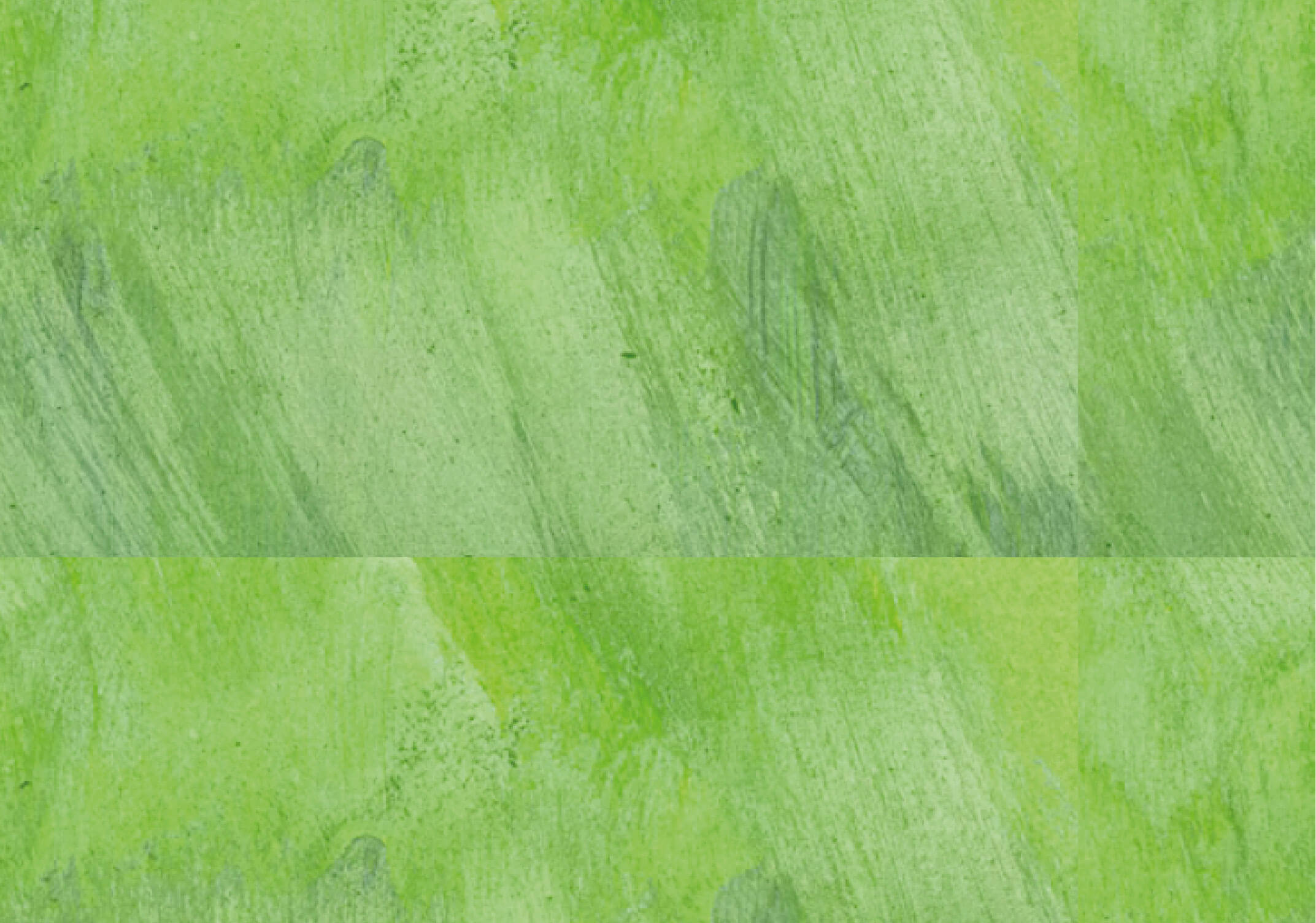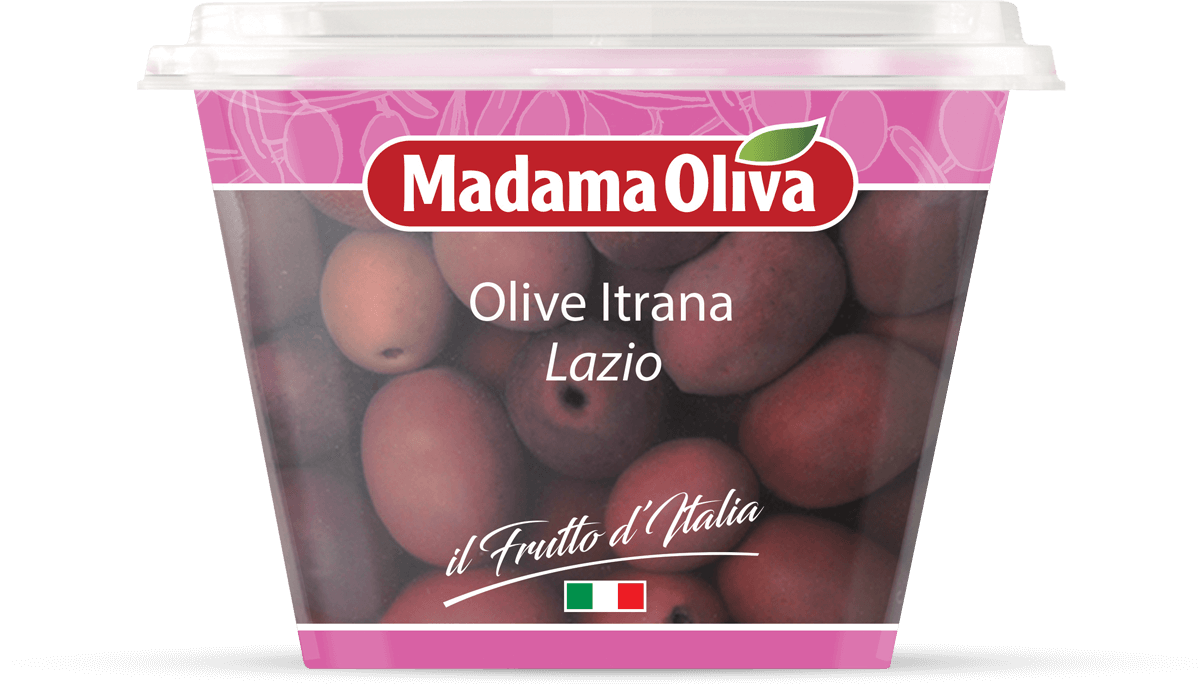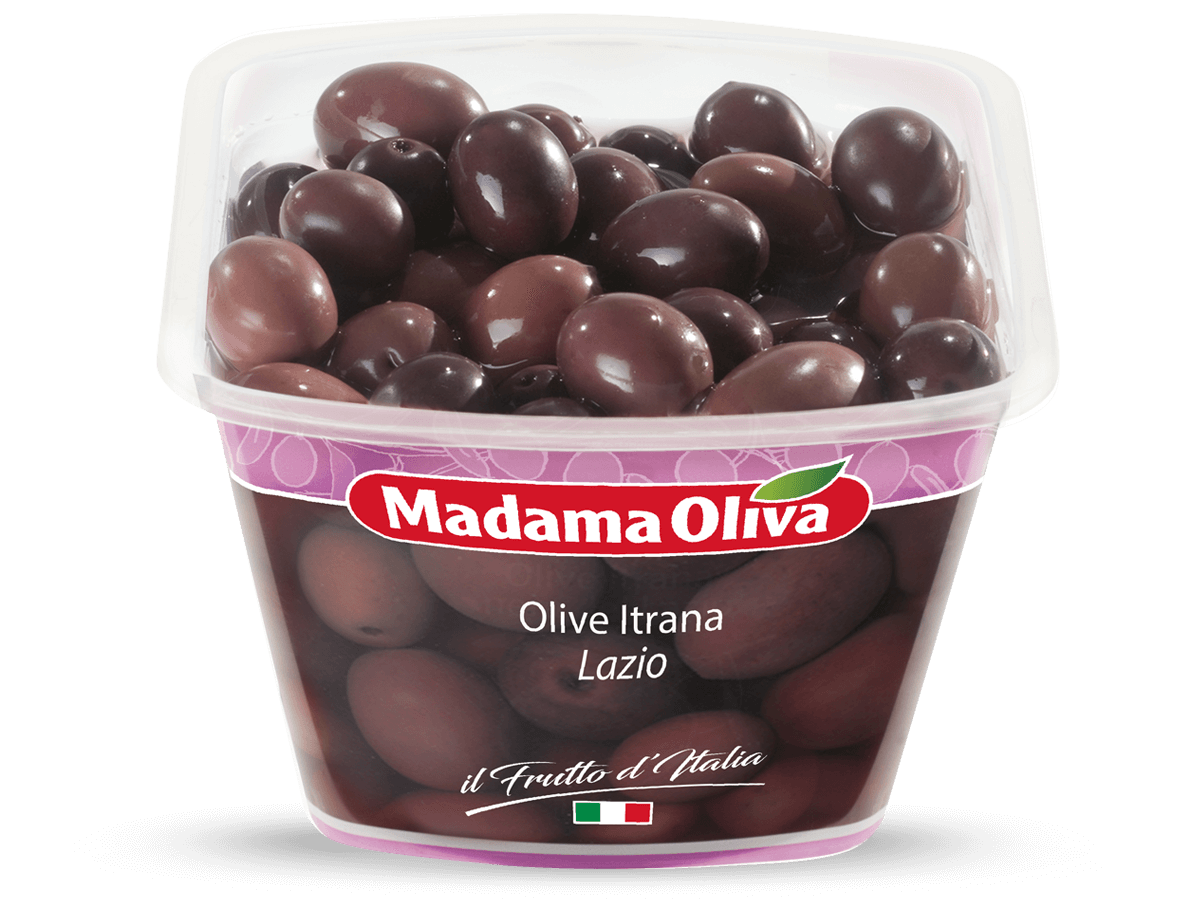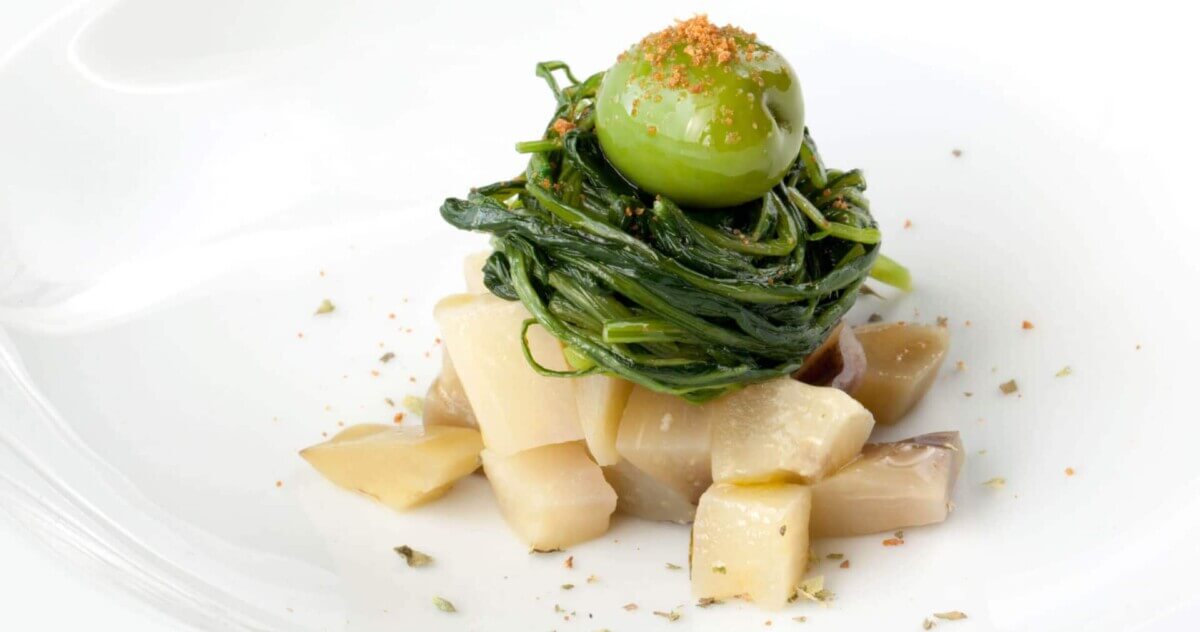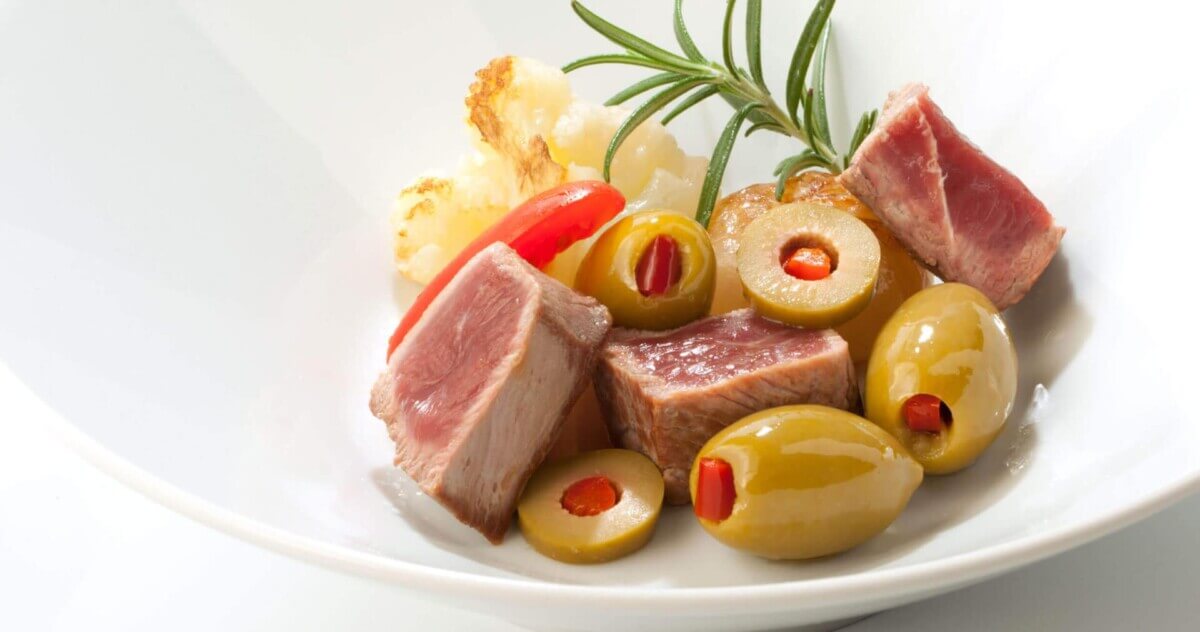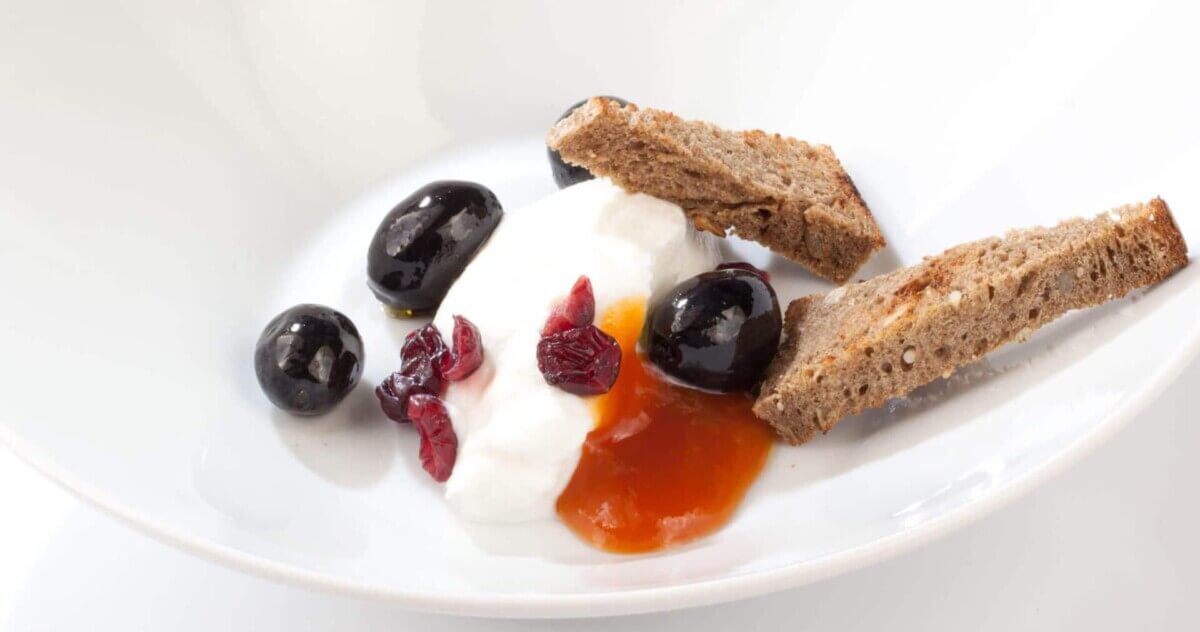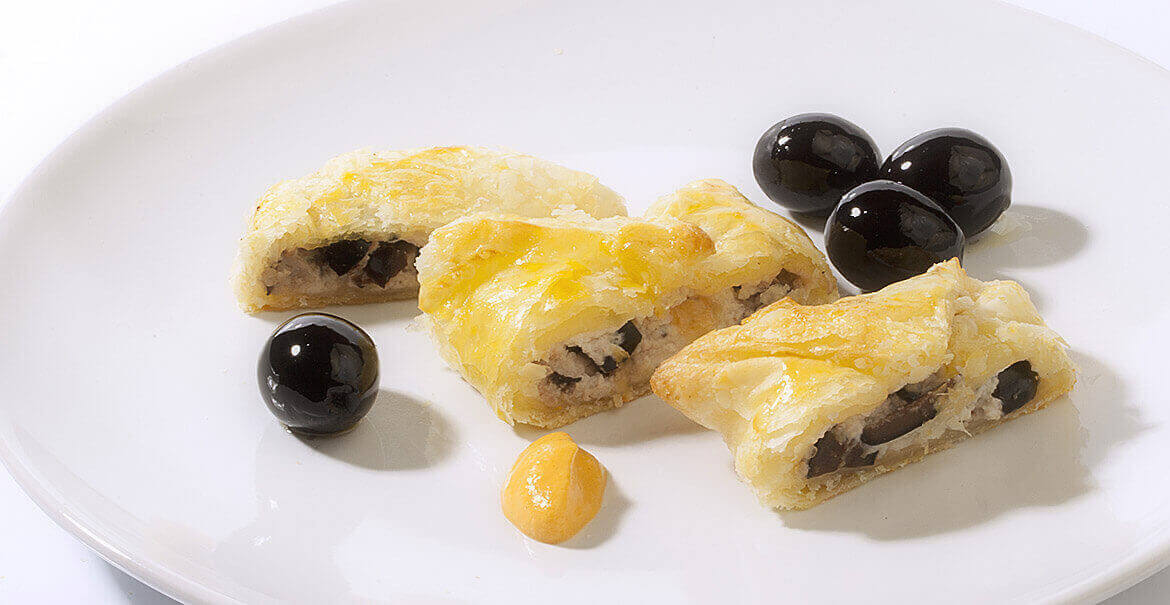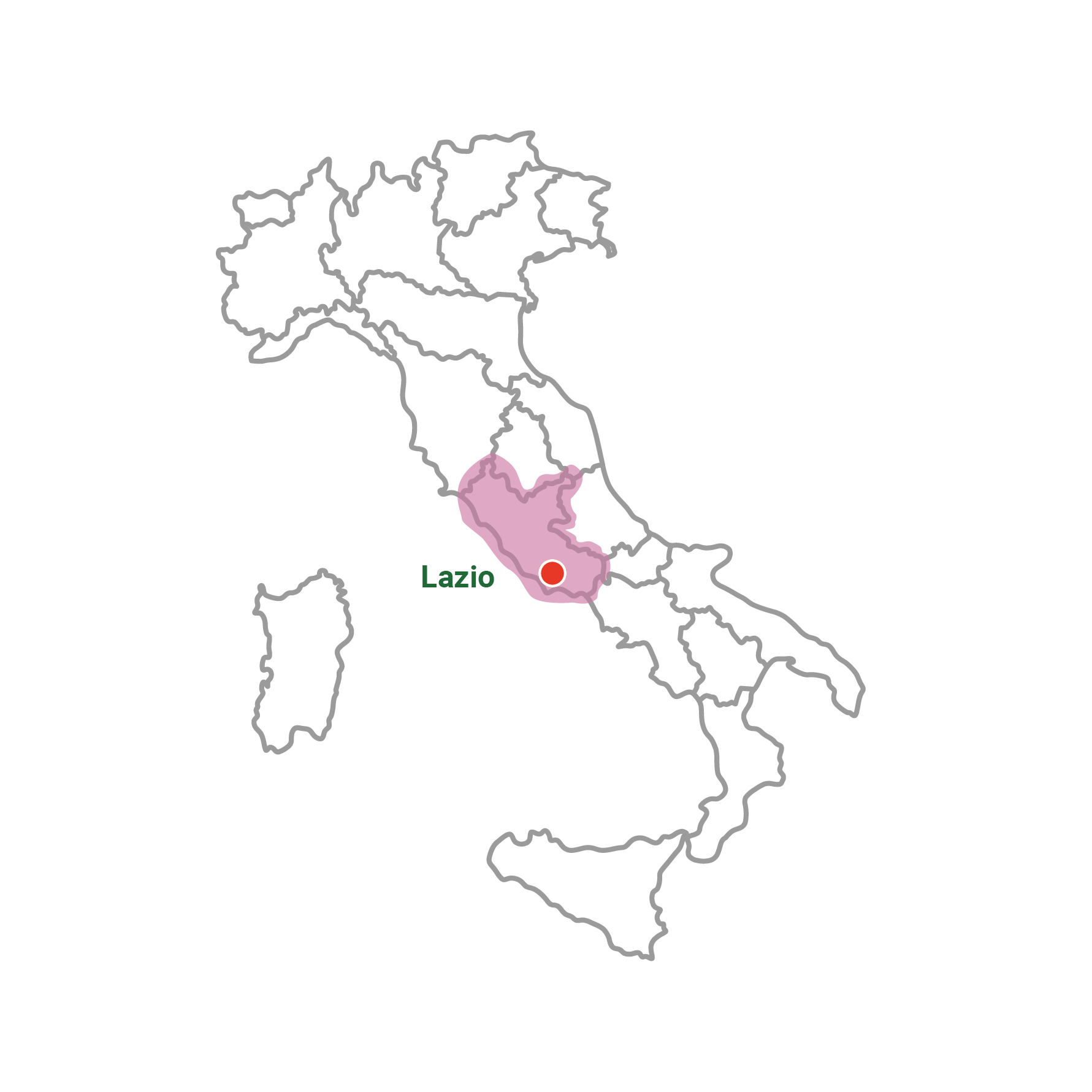
The Itrana Olives adored by Virgil
As early as the Aeneid, Virgil describes the Itrana Olive as a precious fruit, but the most widespread references are found in the Middle Ages when Ancient Caieta seafaring brought it to all the main ports in Europe.
Harvested from the Pontine hills in early spring at the height of ripeness, the olive is purple in colour, its flesh tends to be meaty and its taste is slightly bitter with a mild savoury note.
Serving suggestion
Typically on the more bitter side, it is used in a variety of ways in recipes: sauces, white meat and wild game. In rural tradition, it is used in vegetable side dishes and by fishermen in seafood recipes found on the Lazio coast.
It is certainly one of the most commonly used olives by chefs as an ingredient in international cuisine.
Nutrition Information
Energy 1025 kJ/249 kcal
Fat 25.5 g of which saturates 3 g
Carbohydrates 1 g of which sugars 0 g
Fibre 5.4 g
Protein 1.2 g
Salt 3.8 g
Ingredients
Olives, water, salt. Acidifier: lactic acid.

